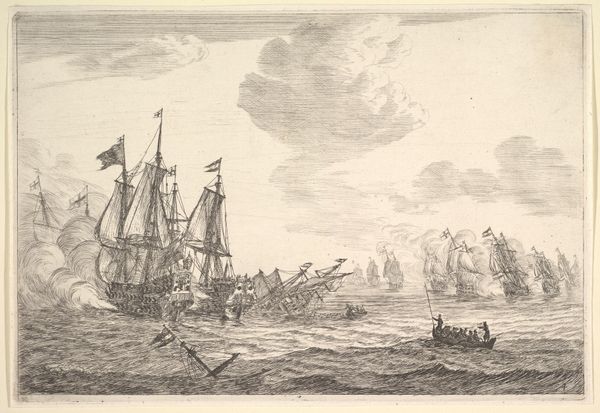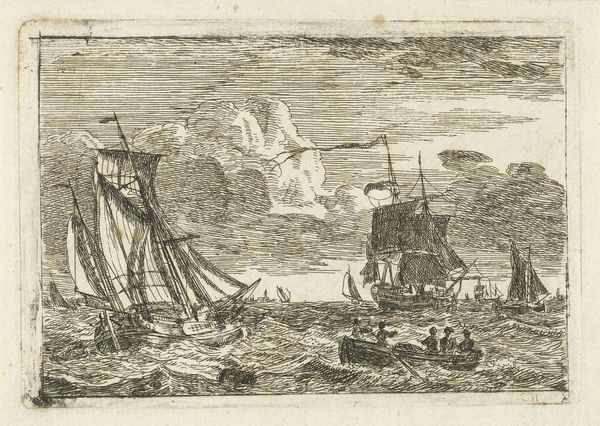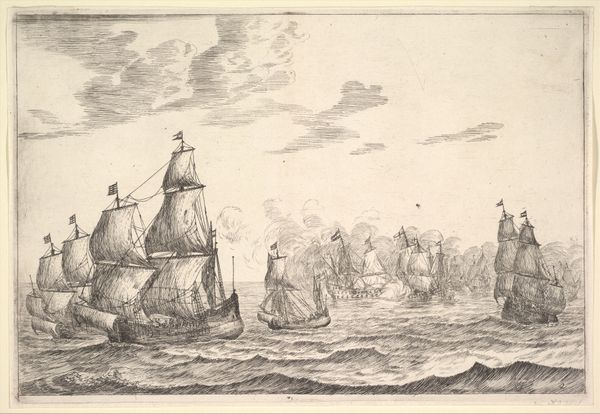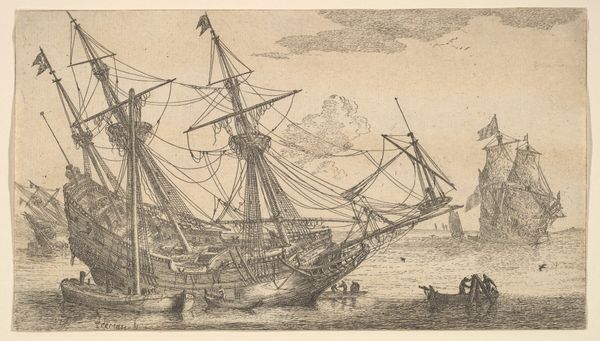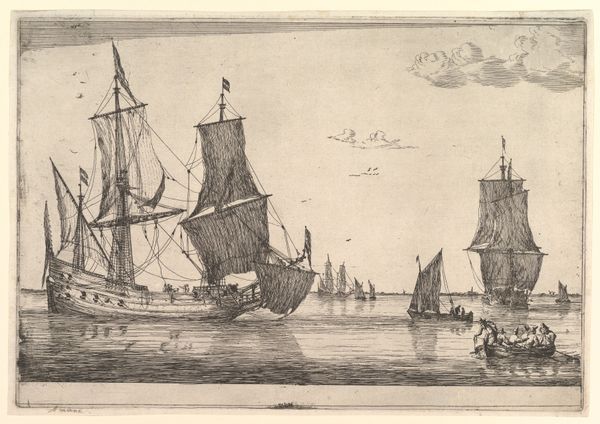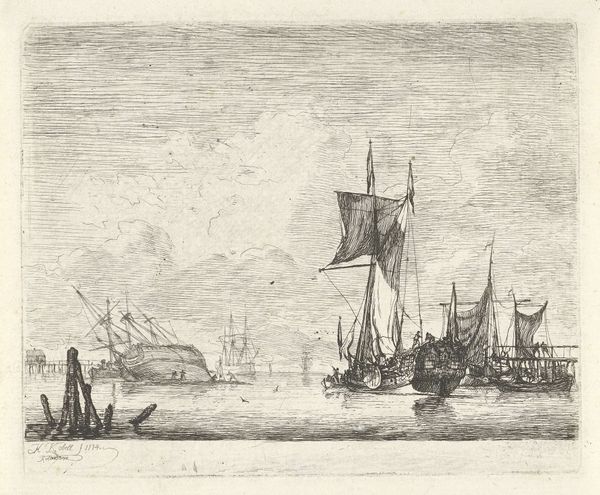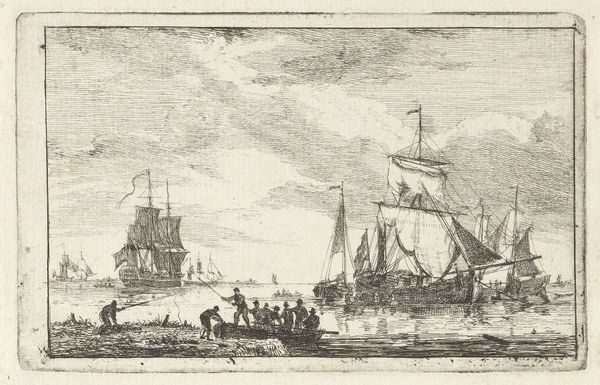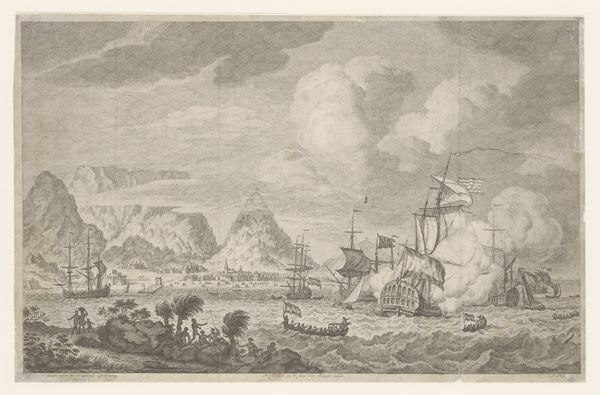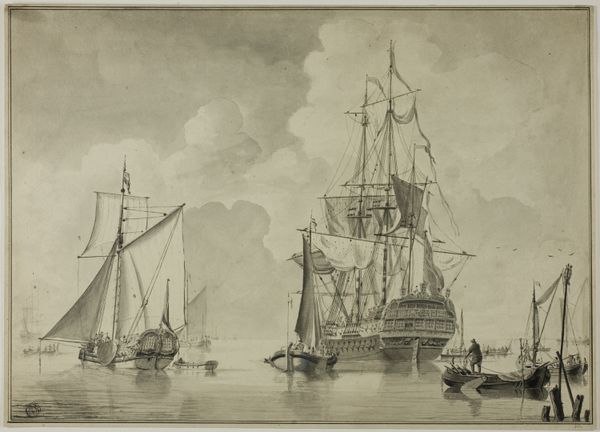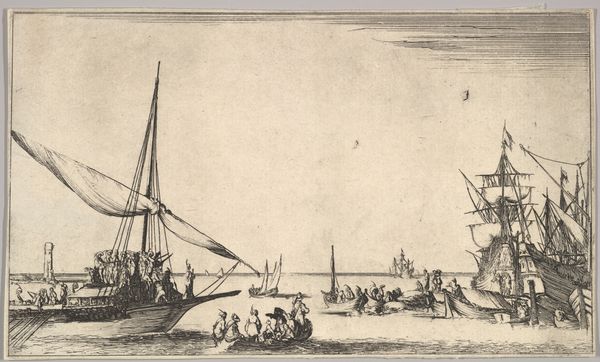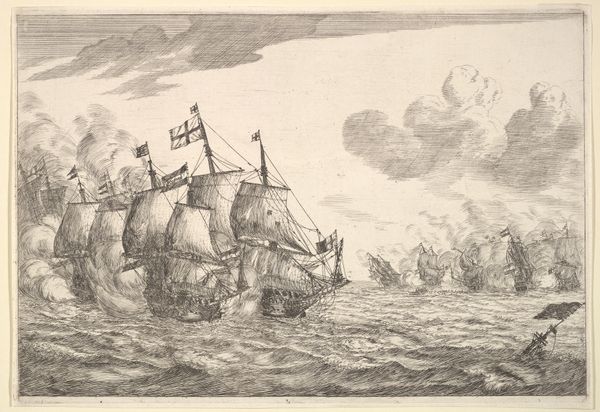
print, etching, engraving
narrative-art
baroque
dutch-golden-age
etching
landscape
cityscape
engraving
Dimensions: 125 mm (height) x 196 mm (width) (bladmaal)
Editor: This etching from 1656 by Reinier Nooms, titled "Harbor with two large sailing ships," has such intricate detail. The precision of the lines is amazing, but I’m wondering about the real story here; what aspects of life are shown or not shown? What do you see in this piece? Curator: Well, let’s start with the obvious. Nooms was a sailor himself, so he understood the labor involved in maritime activity. This wasn’t just an artistic exercise; it reflects lived experience and economic realities. Look closely: the workers on the docks, the scale of the ships indicating their role in trade… Editor: Yes, I noticed that! I had previously seen many landscape paintings showing idealized scenery, while this one appears to show commercial activity front and center. Curator: Exactly. Nooms presents a world where the sea isn't just a pretty view. Consider also that printmaking itself was a means of circulating information and visual culture. These images were commodities, fueling an expanding market for art accessible to a wider audience. Who was consuming these images and what did that mean in terms of shaping perceptions of maritime trade? Editor: So the etching wasn't just documenting the harbor; it was part of the economy it depicts. Would that mean this print wasn't created purely as art, but also a product with utility? Curator: Precisely! By exploring the labor involved in its making, its circulation, and the social context it reflects, we challenge the boundaries separating “art” from “craft” and acknowledge the economic underpinnings of artistic production. What new insight does this provide? Editor: This gives me a lot to think about – not only regarding Nooms' choices and methods, but regarding the art world during that era!
Comments
No comments
Be the first to comment and join the conversation on the ultimate creative platform.
